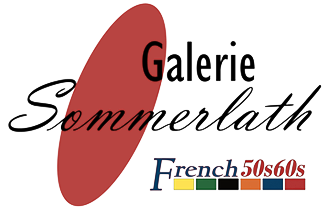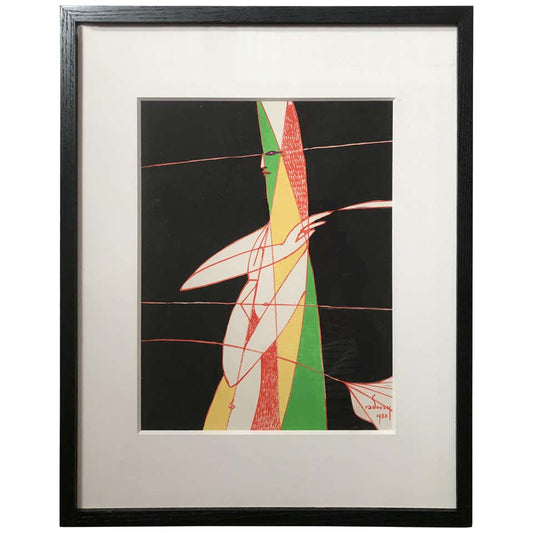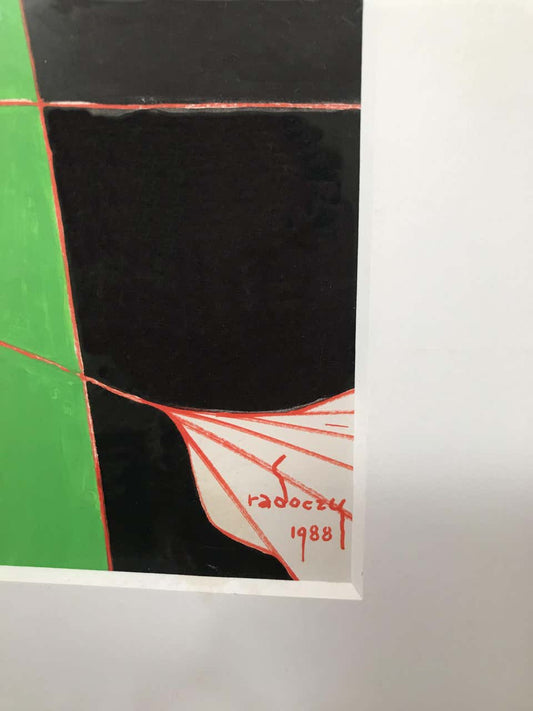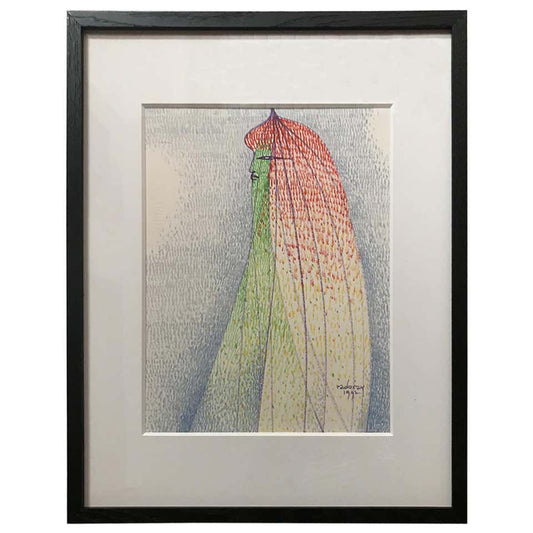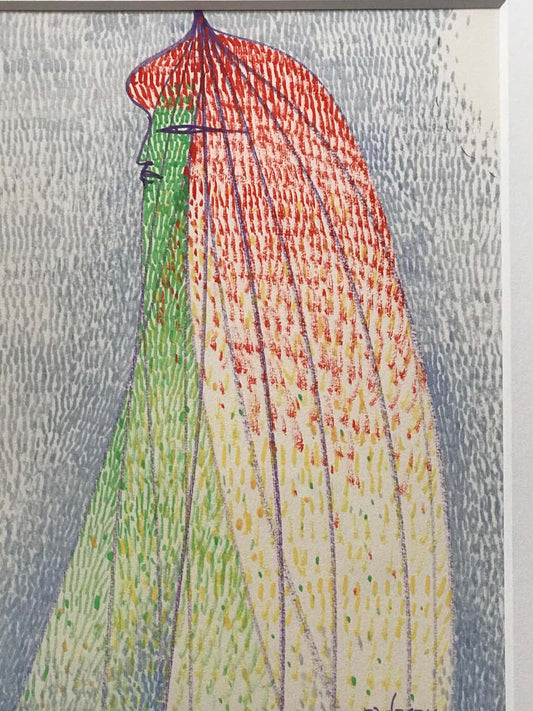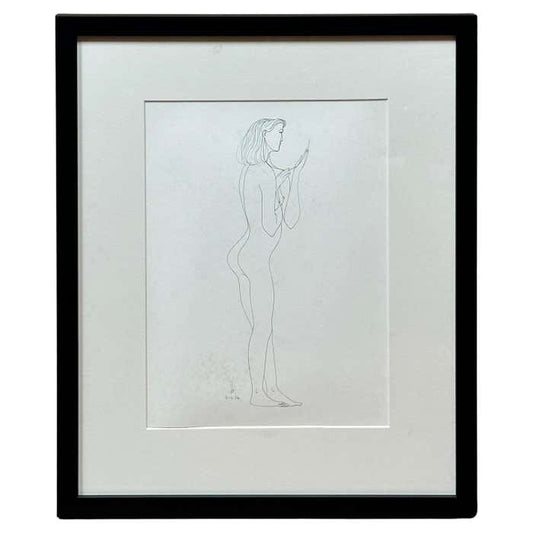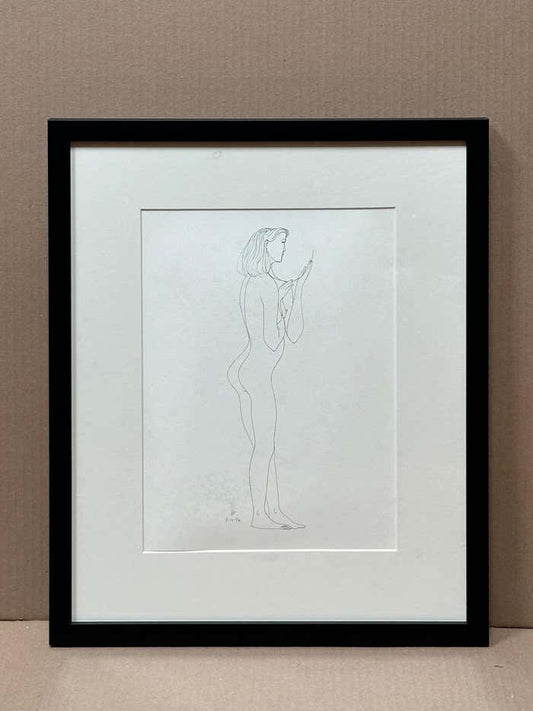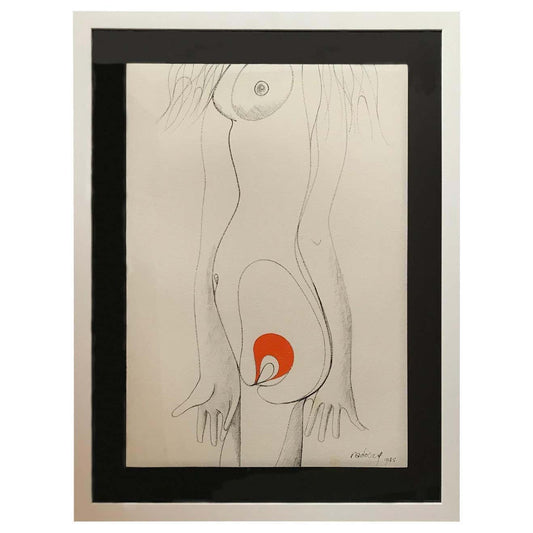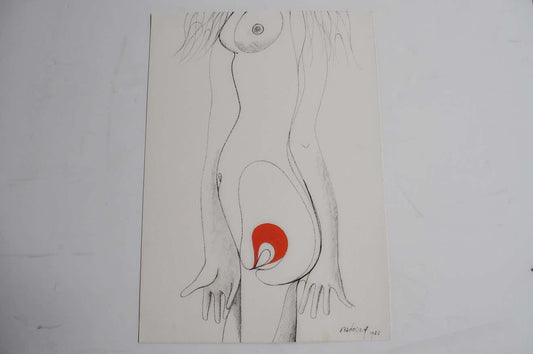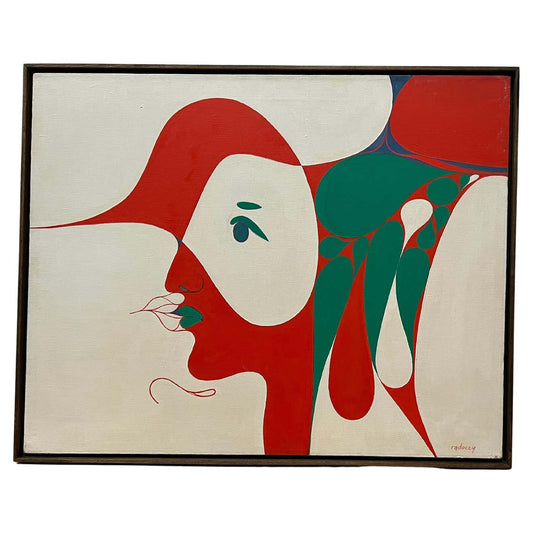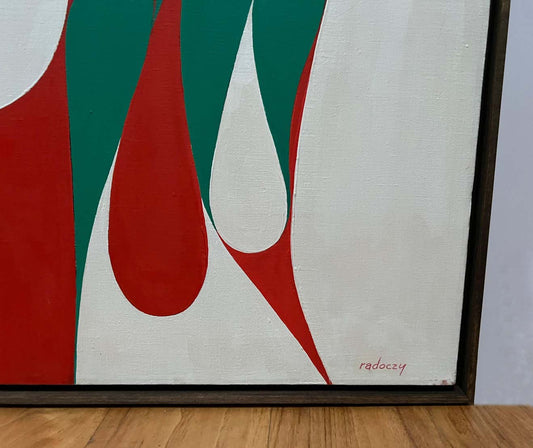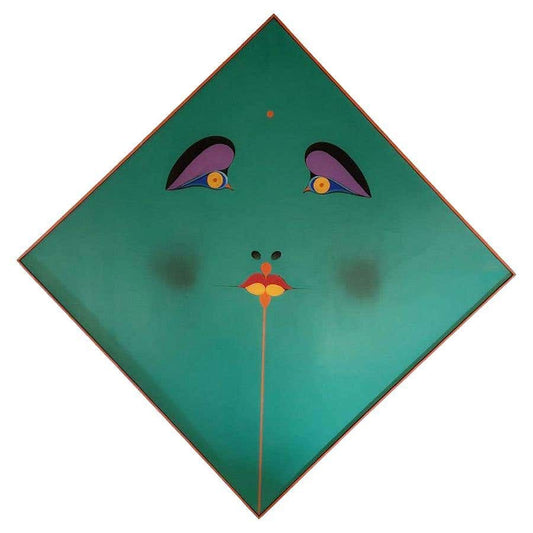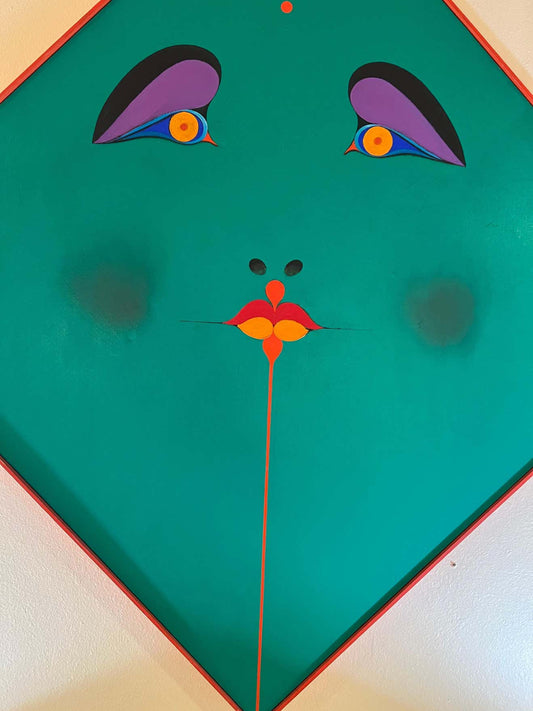Collection: ALBERT RADOCZY
Albert Radoczy
1914-2008
Albert Radoczy was a master at exploring the female form. Throughout his career his drawings and paintings depicted women with images ranging from realistic to whimsical, sensual to spiritual and from ethereal to hallucinatory. While his style evolved with time, the focus was always there. Albert loved the work of Johannes Vermeer and Joachim Pannitir. In fact, Vermeer’s “Girl with Red Hat” appeared in many of his paintings.
Radoczy’s love for drawing spilled over to his paintings. Many of his works feature a calligraphic style that was made possible by using custom made brushes. He had these brushes made with long tapering tips that allowed him to create the beautiful complex webs that make up his paintings. Albert Radoczy was born in Stanford, Connecticut on October 24,1914 and was the son of Hungarian immigrants. He did his undergraduate studies at The Parsons School of Design. His graduate studies were at Cooper Union Art School, and he taught for a few years with that institution.
Radoczy opened a design firm, Habitat Associates with Warren Nardin and later Paul Mayen. Habitat designed modern furniture, lighting and architectural elements such as fabrics, wallpaper and accessories. They worked directly with architects and designers, and were included in “Good Living” - a series of exhibitions and publications put out by the Metropolitan Museum of Art. City College offered Radoczy a position at the University where he could teach and pursue his love of art painting and drawing. This move from Habitat enabled him to later become a Professor or Art and Design.
Radoczy taught and painted for many years and in 1966 he was commissioned by Allegheny College in Meadville, PA to design a three-panel tapestry to be hung in Carr Hall on the campus. The tapestries were introduced at the Pepsi Cola Galleries in New York in May of 1966. Each large hanging panel designed by Radoczy was woven by Pinton Freres in Felliten, France. The three panels represented the fields of Physics, Chemistry and Mathematics. Each panel was designed around a human face that in Radoczy’s words, symbolized the “human spirit and intellect”
